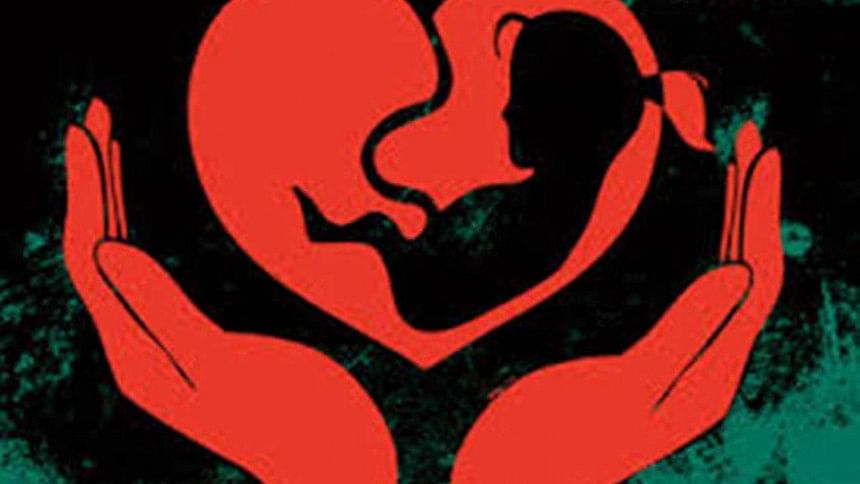Missing daughters

At 26 years of age, Bimala, from a remote village in Western Nepal, gives birth to her sixth child and falls unconscious when she learns that the child is, yet again, a girl. Her husband cries in a corner silently. A mother of four daughters in the town of Surkhet undergoes eight cycles of sex-selective abortions. Another woman, a mother of six daughters, carries out an illegal test to identify the sex of her seventh pregnancy and aborts it upon learning that it is a girl. In the latter two cases, the women and their families are 'educated' people with good socio-economic status.
The cases above were recently published in news reports by the national media, and they are far more than personal tragedies. Such tragedy is a way of life for many women in Nepal and some countries in Asia, where the preference of a 'son' is so powerful that the fate of women depends largely on their ability to produce one. Daughters, it seems, are merely unintended by-products born in the process of producing a son. This may sound an unpleasant and archaic observation when viewed by a privileged few, but it is a blatant reality for many. We need not go much further than observe families with three or more children, and see why daughters were born before the coming of the ultimate son in today's context where the state is promoting a two-child strategy.
According to the United Nations Population Fund, 117 million girls are missing from the global demographic, mostly in Asia and Eastern Europe. This data is derived by comparing the current sex ratio of boys and girls at birth to the biologically natural ratio at birth, which is calculated to be about 103 to 106 boys for every 100 girls. In the Asian Center for Human Rights 2016 report, Liechtenstein, an Eastern European country ranked first with a ratio of 126 boys per 100 girls, China ranked second, India ranked fourth and Nepal ranked 11th for imbalance in the sex ratio at birth. In 2010, the sex ratio at birth for Nepal was 104 boys for 100 girls. This increased to 107 boys for 100 girls in 2015.
Abortion of the female foetus is reported to have flourished after advances in ultrasound and other foetal sex identification technologies, but it would be wrong to say that technology is the cause of this horrifying practice. The root of sex-selective abortion lies in the culture of preferring sons. Largely patriarchal countries like our immediate neighbours have a long history of killing new-born girls since pre-technological ages. Such accounts are too traumatising to describe. Sex selection also occurred in the process of conceiving children in the form of the Chinese calendar and other traditional methods to give birth to a son. This practice continues in some places.
While preference for sons prevails across almost all groups and economic classes, the actual abortion of the female foetus has been shown to occur more among the literate and the socioeconomically well-off population, according to one research report from India. As public health expert Dr Aruna Uprety writes in Kantipur, in Nepal the practice is prevalent in the rural far west as well as the country's major urban centres.
In the context of Nepal and India, the culture for preferring sons finds its roots in the Vedic philosophy which grant males the exclusive power to carry forward the family lineage. It is likely that it is this presumed power of the male which eventually gave rise to sociocultural practices that assigned the son the roles and responsibilities as the family's protector, the inheritor of property and the rightful one to perform funeral rites of the parents—a tradition believed to help the dead ascend to heaven. And all these factors gradually strengthened the preference for the male child.
Not only Hinduism, but other major religions of the world also perceive the procreation of the human race primarily as a result of the masculine force while reducing women to mere apparatuses that carry their seed.
Was the reason behind the exclusive recognition of the male gene in creation and procreation solely the result of patriarchs trying to establish narratives ensuring their supremacy? Was that the reason many religions demonised menstruation as impure rather than glorifying the phenomenon as the primal source of creation? Or was it merely the limitation of knowledge on the science of reproduction? Would such knowledge have changed the narrative of the patriarchal order?
Shaktism—an important sect of Hinduism believed to have originated around 300AD—is taken as the philosophical foundation which celebrates divine femininity as the origin of all existence. The Kamakhya temple in India's Assam worships the bleeding of the mother Earth as the source of fertility. But these philosophies seem to have been pushed aside in the making of the social order that's centred on the male.
But just like old theories are replaced by new ones with greater empirical evidence, today's science acknowledges that daughters are not merely an apparatus for carrying the men's genes, but are equally the carriers of the lineage. It has become crucial to make a concerted effort at all levels to make people aware that daughters are as much a part of themselves as their sons, and that with growing access to education and economic resources, they are capable of carrying out their duties towards their parents and families.
Anjita Parajuli is associated with the Nepal Youth Foundation.
Copyright: The Kathmandu Post/Asia News Network

 For all latest news, follow The Daily Star's Google News channel.
For all latest news, follow The Daily Star's Google News channel. 








Comments